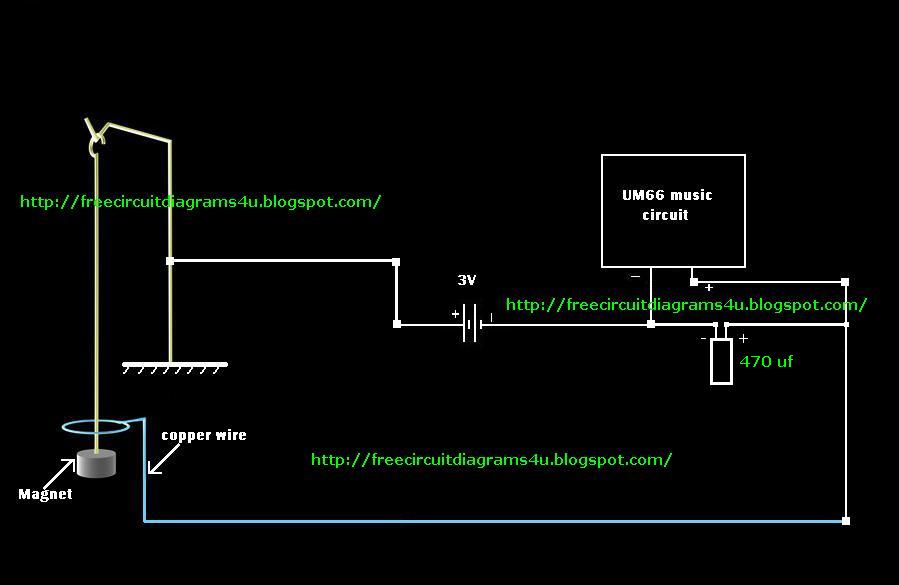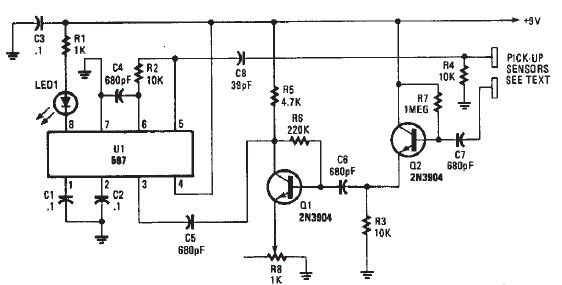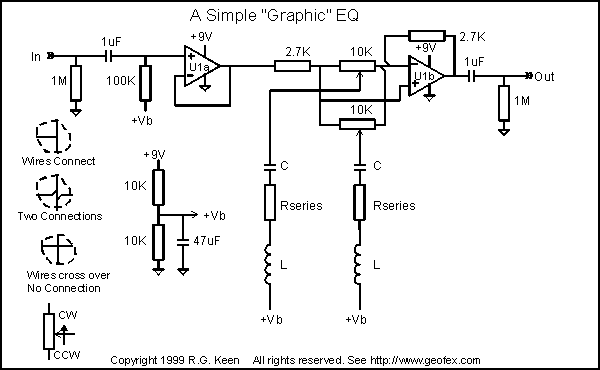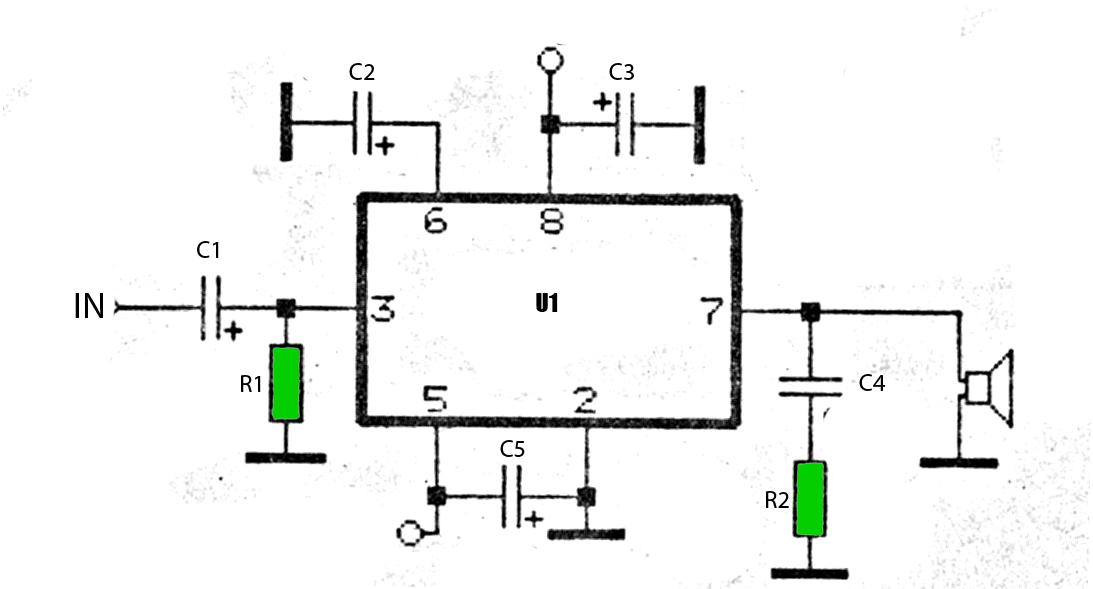
Schematic Diagram Simple ufo Detector

This concept is somewhat different; however, a very simple method has been employed. Many people around the world search for UFOs by observing the sky, and often, wealthy individuals purchase expensive cameras to focus on the sky. In this context, a straightforward diagram has been presented. When UFOs pass through a specific area, they typically emit a high magnetic field. The circuit utilizes this magnetic power for detection. When a UFO enters the vicinity, the magnet in the circuit will move, activating the circuit.
The circuit described is a basic UFO detection system that operates on the principle of magnetic field detection. The core component of this system is a magnetic sensor, which is sensitive to variations in magnetic fields. When a UFO, which is presumed to generate a high magnetic field, passes nearby, the sensor detects this change.
The circuit can be designed using a Hall effect sensor or a magnetoresistive sensor, which will respond to the magnetic field produced by the UFO. The output from the sensor can be connected to a microcontroller or a simple transistor switch. When the magnetic field strength exceeds a certain threshold, the sensor outputs a signal that triggers the circuit. This may activate an LED indicator, sound an alarm, or send a notification to a connected device.
Power supply for the circuit can be sourced from batteries or a small solar panel, allowing for portability and ease of use in various outdoor settings. Additional components, such as resistors and capacitors, may be included to stabilize the circuit and prevent false triggers from environmental magnetic interference.
The schematic of the circuit would include the sensor connected to a power source, with output lines leading to an activation mechanism, such as an LED or buzzer. This simple yet effective design provides an innovative approach to detecting unidentified flying objects using readily available electronic components.This is some what different concept But here I have used very simple method. Most of people in the world find UFOs by looking at the sky most of time we can see some rich people buy cameras and focus them to the sky. But those unites are so expensive here I have shown you very simple diagram. When UFOs pass our area normally those machines out put hi gh magnetic field so here we have used that magnetic power to detect them. when a UFO passes your area the magnet of your circuit will move. then the circuit will be switched on 🔗 External reference
The circuit described is a basic UFO detection system that operates on the principle of magnetic field detection. The core component of this system is a magnetic sensor, which is sensitive to variations in magnetic fields. When a UFO, which is presumed to generate a high magnetic field, passes nearby, the sensor detects this change.
The circuit can be designed using a Hall effect sensor or a magnetoresistive sensor, which will respond to the magnetic field produced by the UFO. The output from the sensor can be connected to a microcontroller or a simple transistor switch. When the magnetic field strength exceeds a certain threshold, the sensor outputs a signal that triggers the circuit. This may activate an LED indicator, sound an alarm, or send a notification to a connected device.
Power supply for the circuit can be sourced from batteries or a small solar panel, allowing for portability and ease of use in various outdoor settings. Additional components, such as resistors and capacitors, may be included to stabilize the circuit and prevent false triggers from environmental magnetic interference.
The schematic of the circuit would include the sensor connected to a power source, with output lines leading to an activation mechanism, such as an LED or buzzer. This simple yet effective design provides an innovative approach to detecting unidentified flying objects using readily available electronic components.This is some what different concept But here I have used very simple method. Most of people in the world find UFOs by looking at the sky most of time we can see some rich people buy cameras and focus them to the sky. But those unites are so expensive here I have shown you very simple diagram. When UFOs pass our area normally those machines out put hi gh magnetic field so here we have used that magnetic power to detect them. when a UFO passes your area the magnet of your circuit will move. then the circuit will be switched on 🔗 External reference





